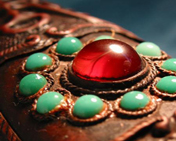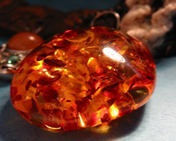Tibetan Jewellery

Jewelry has traditionally been an important part of Tibetan daily dress. It is believed, jewels put people in touch with deities, and protect them from the many hazards of life in their rugged and treacherous land. In the Himalayas, jewelry was indicative of the social status and political power of the wearer. It also reflected the traditions of Buddhism and Hinduism. Within both these regions gems and jewelry were often regarded as metaphors for ideals of faith.

The materials from which the objects were made were also believed to have healing properties. Gold was thought to have a range of restorative qualities in addition to increasing longevity and dispelling demons. Turquoise, pearls, coral and lapis lazuli were all invested with specific curative powers. Himalayan jewelry is often oversized and heavy, with elaborate surface design and an exuberance of color. The value of jewelry was historically determined by the intensity of color and size of the components, rather than the value in gems or precious metals.





 8 Days Nyingchi Shigatse Namtso Tour
8 Days Nyingchi Shigatse Namtso Tour  4-Day Lhasa Join-in Group Tour
4-Day Lhasa Join-in Group Tour  5 Days Lhasa Group Tour with Yamdrok Lake
5 Days Lhasa Group Tour with Yamdrok Lake  5 Days Lhasa Pilgrimage Tour to Ganden Monastery & Drak Yerpa
5 Days Lhasa Pilgrimage Tour to Ganden Monastery & Drak Yerpa  8 Days Lhasa-Shigatse-EBC-Group Tour
8 Days Lhasa-Shigatse-EBC-Group Tour  Data in submission...
Data in submission...


